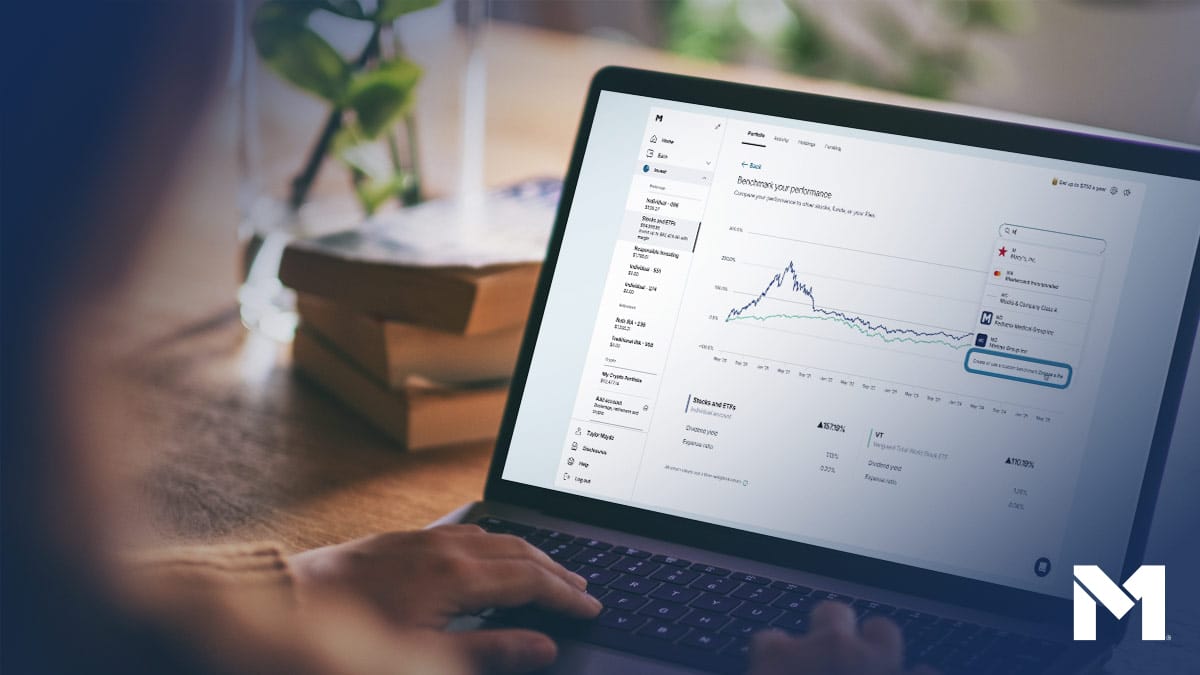Crypto enthusiasts and investors cheer, government shakes its collective head

Remember the Winklevoss twins? In July 2013, the brothers turned entrepreneurs had a ludicrous idea (at the time) for an ETF where investors can buy into cryptocurrency by owning shares of the ETF. Nearly 11 years later and several legal battles flights, nearly a dozen spot bitcoin ETFs were approved for public trading on Jan. 11. A few of them are now available on M1, including GBTC and BITO, among others.
These ETFs give investors the opportunity for exposure to bitcoin without the friction of buying it and storing the tokens in a digital wallet. But it does come with a few downsides and risks that investors should know.
Here’s an explainer on how this works, how we got here, and things to keep in mind if you’re thinking of buying shares of a spot bitcoin ETF.
What the heck is a “spot bitcoin ETF”?
This phrase can be puzzling, so let’s dissect it piece by piece.
Bitcoin is the world’s most popular cryptocurrency by value (roughly $818B in total market cap as of Jan. 22, 2024).
An ETF (short for exchange traded fund) is a security that contains a “basket” of stocks. It’s a convenient way for investors to remain diversified without the hassle of buying multiple individual stocks. For example, instead of buying the top 500 companies one by one, you can simply purchase shares of an S&P 500 ETF. There are thousands of ETFs available to purchase shares of through a brokerage.
”Spot” means that the fund holds actual bitcoin, not any contracts or derivatives tied to bitcoin.
So let’s put this all together: what is a spot bitcoin ETF? It is a fund that owns a large pool of bitcoin that you can own shares in. For example, GBTC holds roughly 617,000 total bitcoins as of January 17, 2024. By purchasing a share in GBTC (or another spot bitcoin ETF), you will own part of that total basket of coins, giving you direct exposure without holding the coins themselves.
These benefits are just a few of what can potentially attract new retail and institutional investors. Trading, mining, and storing bitcoin present several challenges to the average investor. Mining fees can be costly and knowing how to transact in cryptocurrency can feel like learning a new language.
But ETFs are by now as familiar as stocks and bonds in the investing landscape, so those who want to own bitcoin without deciphering the world of cryptographic hash functions and decentralized ledger technologies can do so.
The bumpy road to digital gold on Wall Street
Until recently, the primary way to invest in bitcoin and other cryptocurrencies was to purchase the coins directly with a cryptocurrency trading platform and store the tokens in a digital wallet. This purchasing and storage method worked well for tech-savvy traders who desired to understand the intricacies of cryptocurrency and blockchain. However, for most individual and institutional investors, this process could be too cumbersome to tackle.
This is where the opportunity for an ETF came to fruition. At this point, the Securities and Exchange Commission still opposed bitcoin ETFs on the grounds that they were not “designed to prevent fraudulent and manipulative acts and practices.”
This may have been the right call by the SEC at the time. Since then, a laundry list of cryptocurrency platforms, including Gemini and infamously FTX, faced everything from lawsuits to bankruptcies in the billions due to fraud and other regulatory issues. Still, crypto continued to gain in popularity and mainstream acceptance, and firms continued to submit filings to create securities that held crypto assets.
In April 2021, now SEC chairman Gary Gensler was sworn into his role. Crypto was a large initiative to tackle for him in his new role, but he was skeptical of the entire industry, saying in a speech that August, “Right now, we just don’t have enough investor protection in crypto. Frankly, at this time, it’s more like the Wild West. This asset class is rife with fraud, scams, and abuse in certain applications… In many cases, investors aren’t able to get rigorous, balanced, and complete information.” Despite this take from the Chairman, it would eventually be bulldozed over.
In Oct. 2021, the SEC allowed the first bitcoin futures ETF (BITO) to launch. The agency’s approval was lukewarm, with Gensler stating that the fund provides “significant investor protections.” However, this still maintained the barrier between investors and cryptocurrency as a futures ETF doesn’t contain bitcoin itself. Firms saw the opportunity to keep the pressure on.
In 2022, Grayscale’s application for a spot bitcoin ETF was rejected by the SEC, and the firm filed a lawsuit. This litigation proved to be the turning point. In June 2023, during the Grayscale proceedings, Blackrock also filed for its own ETF. In August, the U.S. Courts ruled in favor of Grayscale to move forward with a spot bitcoin ETF. Since the ruling, bitcoin is up a whopping 44%, as of this writing.
The court stated that the SEC was “arbitrary and capricious” to strike down the initial filing. The court, “never explained why Grayscale owning bitcoins rather than bitcoin futures affects the [Chicago Mercantile Exchange]’s ability to detect fraud.” The SEC decided not to appeal. A full explainer on the case can be found here.
After the court case loss, the 11 spot bitcoin ETFs went to a final vote among five SEC commissioners — two Republicans, two Democrats and Gensler. The two Republicans voted yes, and the two Democrats voted no. Gensler’s vote was the tiebreaker, and despite his reluctance — he approved the ETFs. He made it clear that it was not an endorsement or approval of bitcoin itself.
And now that these 11 spot bitcoin ETFs have launched, they have garnered significant interest and investment. Over $1 billion in trades happened in the first 30 minutes. $7.7 billion in trades happened in the first two days, roughly half of the total market share of Domino’s Pizza. And JPMorgan estimates a whopping $36 billion could flow into these new investments.
What investors may consider
This is a historic event for cryptocurrency as it continues to creep into the mainstream of finance. Now that spot bitcoin ETFs are available for public trading, investors of all kinds could get exposure to bitcoin without the potential hassle, fees and trouble of buying and storing coins.
However, like ETFs that hold equities, these spot bitcoin ETFs come with their own expense ratios, the percentage of assets in the fund that are used to cover expenses associated with managing the fund. Here are the expense ratios as they stand today:
- ARKB, 0.21%
- BITB, 0.20%
- FBTC, 0.40%
- EZBC, 0.29%
- GBTC, 1.50%
- DEFI, 0.90%
- BTCO, 0.39%
- IBIT, 0.25%
- BRRR, 0.49%
- HODL, 0.25%
- BTCW, 0.30%
Additionally, owning an ETF rather than the underlying cryptocurrency may make a difference in how you’re taxed. So be sure to check with a tax professional to create a strategy that works for you.
The bottom line
Investors should be mindful of the potential differences between purchasing bitcoin directly and buying shares in a spot bitcoin ETF. While these funds give investors a more convenient way to get exposure to crypto, SEC Chairman Gary Gensler reminded viewers on CNBC that the underlying asset of bitcoin is “highly speculative and volatile.”
Just like any other investment, be sure to do your due diligence. But somewhere out in the world, Satoshi Nakamoto, the pseudonymous person or group of people who created bitcoin, may be shaking their collective head(s) as the invention designed to fight against the powers of traditional finance is now Wall Street’s newest trophy.
20240122-3340939-10603797
- Categories
- Invest



